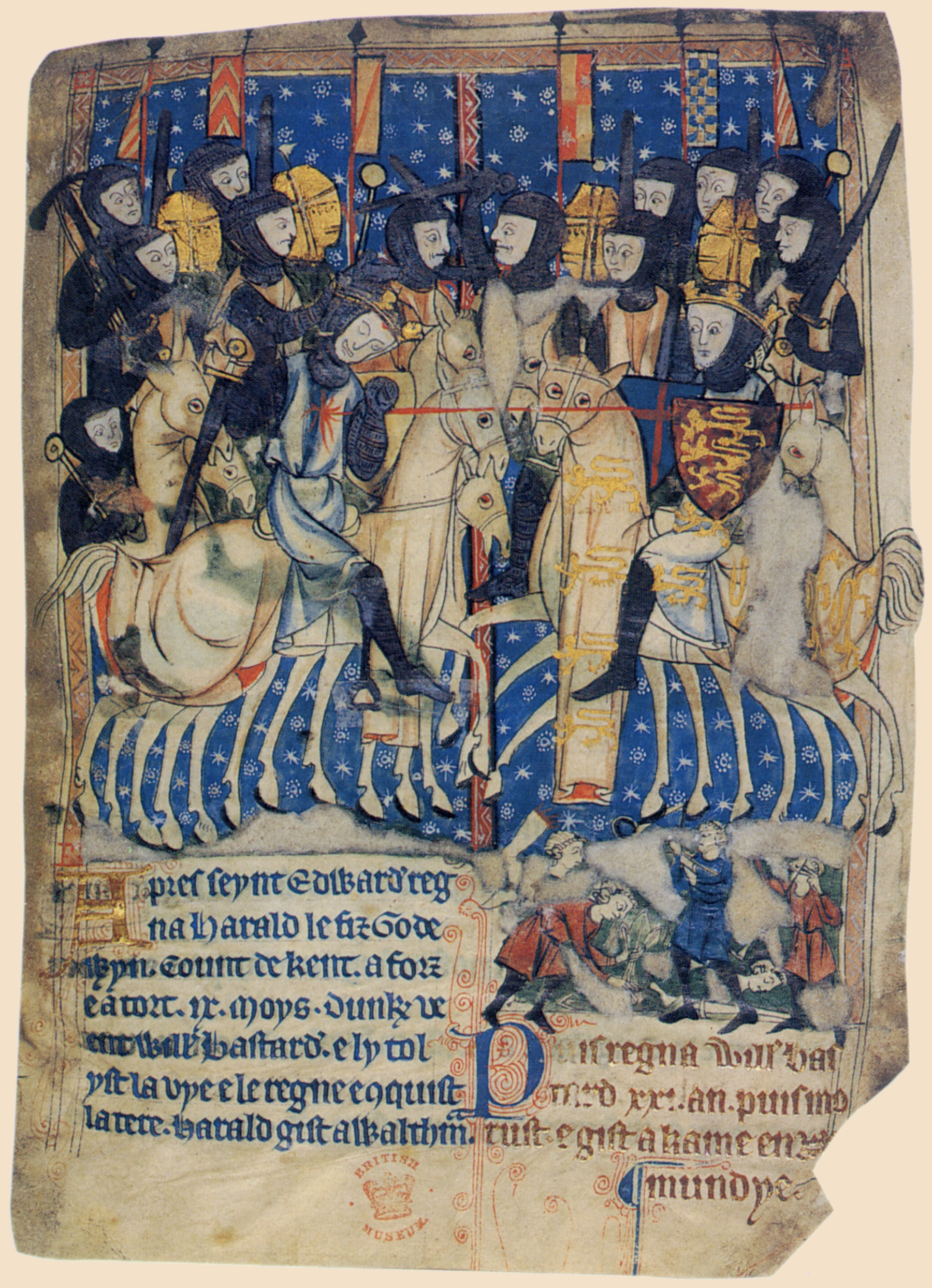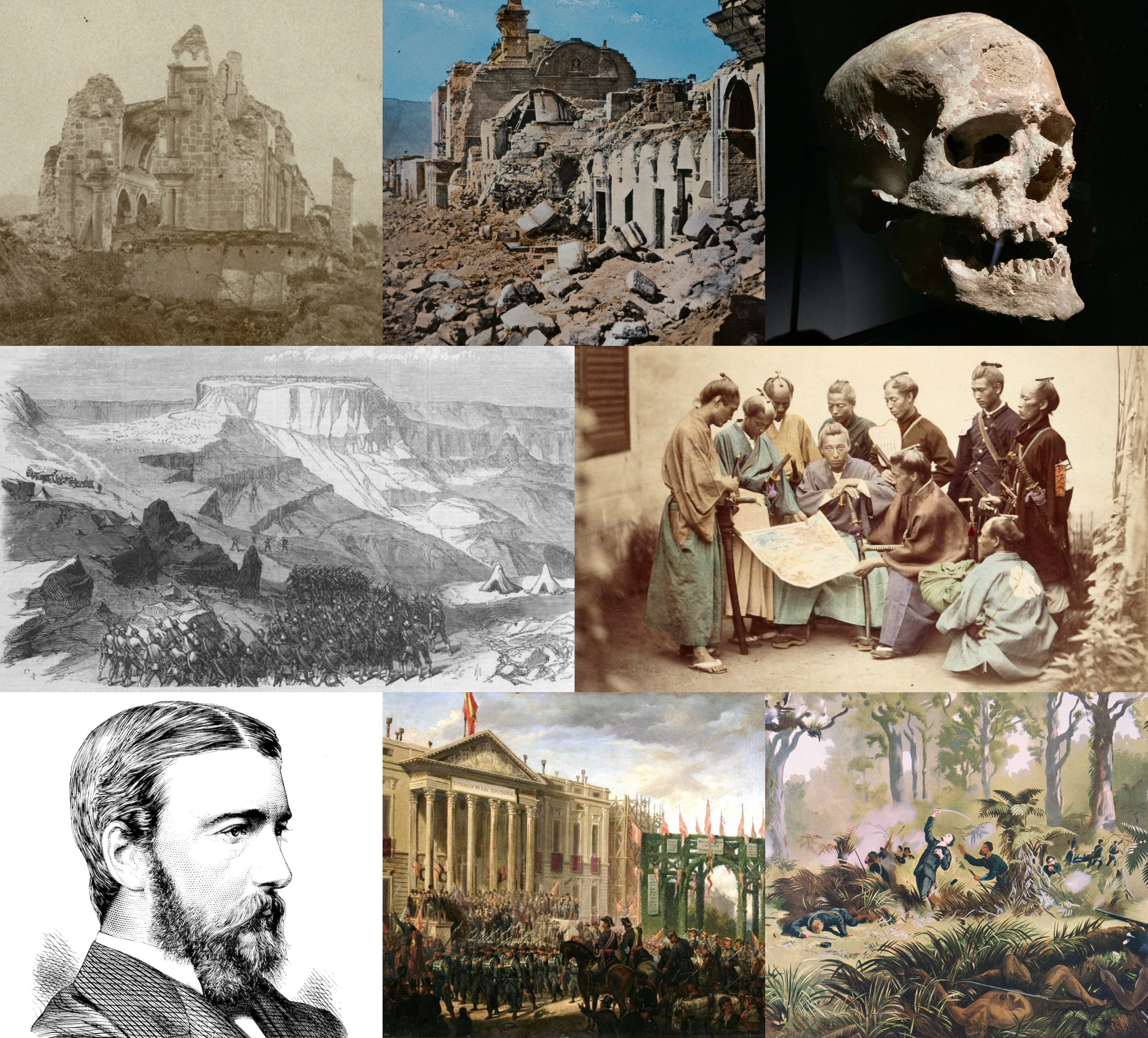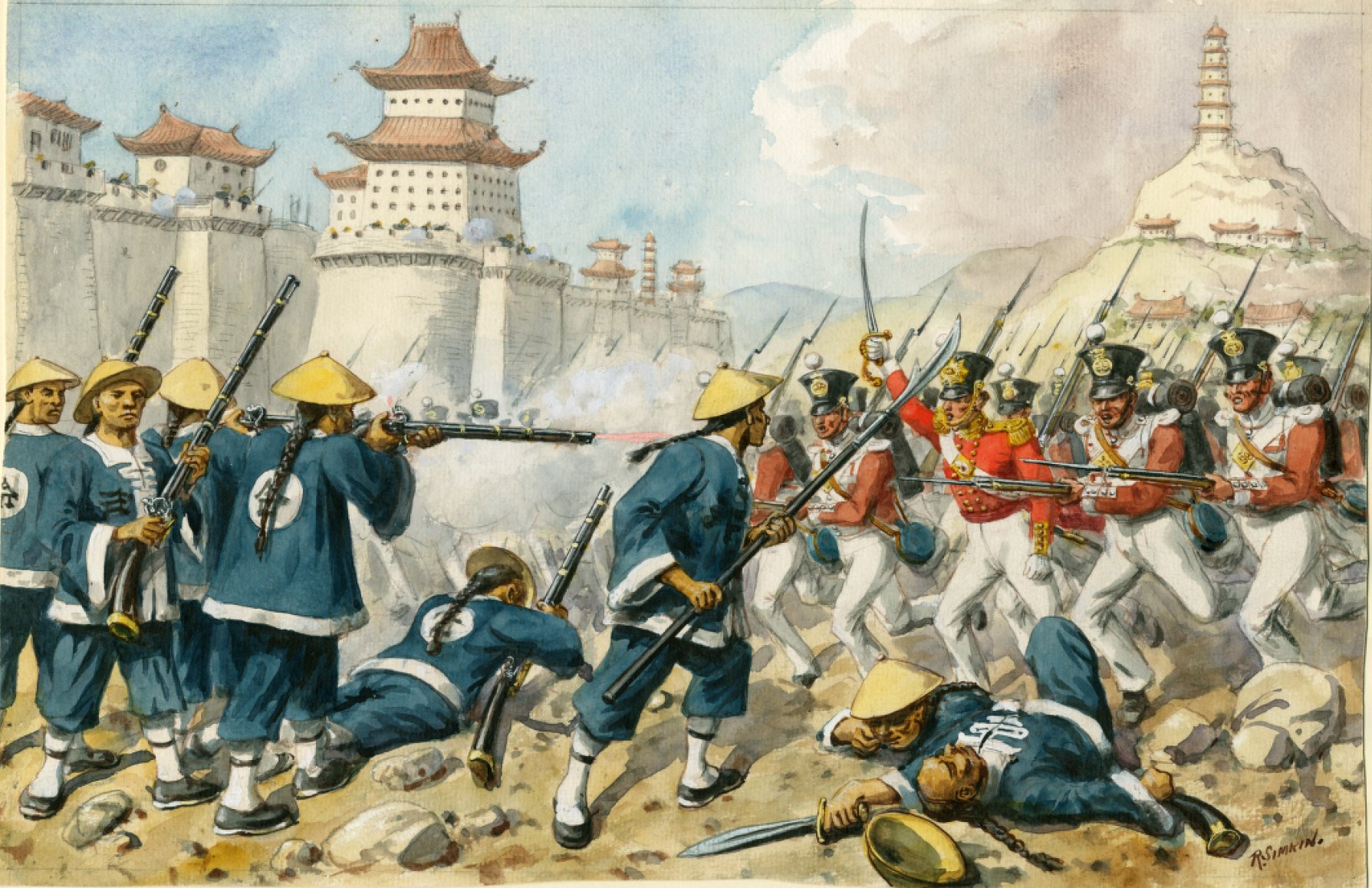|
Henry Rawdon-Hastings, 4th Marquess Of Hastings
Henry Weysford Charles Plantagenet Rawdon-Hastings, 4th Marquess of Hastings and 9th Earl of Loudoun (22 July 1842 – 10 November 1868), styled Lord Henry Rawdon-Hastings from birth until 1851, was a British peer. He was also, starting from most senior barony, 21st Baron Grey of Ruthyn (of 1324), 20th Baron Botreaux (of 1368), 19th Baron Hungerford (of 1426), and 17th Baron Hastings (of 1461). Early life Rawdon-Hastings was the second son of George Rawdon-Hastings, 2nd Marquess of Hastings, the British peer and courtier, and his wife Barbara ''née'' Yelverton, 20th Baroness Grey de Ruthyn. His father died when Henry was only two years old, and Henry succeeded to his father's titles upon the early death of his older brother Paulyn seven years later, when Henry was aged nine. Later, in 1858, Henry inherited his mother's barony at the age of sixteen. His aunt was Lady Flora Hastings. In 1860, ''The Times'' noted that Rawdon-Hastings was one of only three to hold peerages in al ... [...More Info...] [...Related Items...] OR: [Wikipedia] [Google] [Baidu] |
The Most Honourable
The honorific prefix "The Most Honourable" is a form of address that is used in several countries. In the United Kingdom, it precedes the name of a marquess or marchioness. Overview In Jamaica, Governor-General of Jamaica, Governors-General of Jamaica, as well as their spouses, are entitled to be styled "The Most Honourable" upon receipt of the Jamaican Order of the Nation."National Awards of Jamaica" Jamaica Information Service, accessed May 12, 2015. Prime Minister of Jamaica, Prime Ministers of Jamaica, and their spouses, are also styled this way upon receipt of the Order of the Nation, which is only given to Jamaican Governors-General and Prime Ministers. In The Bahamas, the style "The Most Honourable" is given to recipients of the Bahamian Order of the Nation (Bahamas), Order of the Nation. [...More Info...] [...Related Items...] OR: [Wikipedia] [Google] [Baidu] |
Marquess Of Hastings
Marquess of Hastings was a title in the Peerage of the United Kingdom. It was created on 6 December 1816 for Francis Rawdon-Hastings, 2nd Earl of Moira. History The Rawdon family descended from Francis Rawdon (d. 1668), of Rawdon, Yorkshire. His son Sir George Rawdon, 1st Baronet settled in the village of Moira, County Down. His son, the second Baronet, and grandson, the third Baronet, both represented County Down in the Irish House of Commons. The latter was succeeded by his son, Sir John Rawdon, 4th Baronet. He was created Baron Rawdon, of Moira in the County of Down, in 1750, and Earl of Moira in 1762. Both titles were in the Peerage of Ireland. Lord Moira married as his third wife Elizabeth Hastings, 12th Baroness Hastings, 16th Baroness Botreaux, 11th Baroness Hungerford and 10th Baroness de Moleyns, daughter of Theophilus Hastings, 9th Earl of Huntingdon. Their son Francis Rawdon was a prominent soldier and colonial administrator. He was created Baron Rawdon, of Raw ... [...More Info...] [...Related Items...] OR: [Wikipedia] [Google] [Baidu] |
Marquesses Of Hastings
A marquess (; ) is a nobleman of high hereditary rank in various European peerages and in those of some of their former colonies. The German-language equivalent is Markgraf (margrave). A woman with the rank of a marquess or the wife (or widow) of a marquess is a marchioness () or marquise (). These titles are also used to translate equivalent Asian styles, as in Imperial China and Imperial Japan. Etymology The word ''marquess'' entered the English language from the Old French ("ruler of a border area") in the late 13th or early 14th century. The French word was derived from ("frontier"), itself descended from the Middle Latin ("frontier"), from which the modern English word ''March (territory), march'' also descends. The distinction between governors of frontier territories and interior territories was made as early as the founding of the Roman Empire when some provinces were set aside for administration by the senate and more unpacified or vulnerable provinces were admini ... [...More Info...] [...Related Items...] OR: [Wikipedia] [Google] [Baidu] |
Burials At Kensal Green Cemetery
Burial, also known as interment or inhumation, is a method of final disposition whereby a dead body is placed into the ground, sometimes with objects. This is usually accomplished by excavating a pit or trench, placing the deceased and objects in it, and covering it over. A funeral is a ceremony that accompanies the final disposition. Evidence suggests that some archaic and early modern humans buried their dead. Burial is often seen as indicating respect for the dead. It has been used to prevent the odor of decay, to give family members closure and prevent them from witnessing the decomposition of their loved ones, and in many cultures it has been seen as a necessary step for the deceased to enter the afterlife or to give back to the cycle of life. Methods of burial may be heavily ritualized and can include natural burial (sometimes called "green burial"); embalming or mummification; and the use of containers for the dead, such as shrouds, coffins, grave liners, and buri ... [...More Info...] [...Related Items...] OR: [Wikipedia] [Google] [Baidu] |
Masters Of Foxhounds
Master, master's or masters may refer to: Ranks or titles In education: *Master (college), head of a college *Master's degree, a postgraduate or sometimes undergraduate degree in the specified discipline *Schoolmaster or master, presiding officer of a school In military: *Master (naval), a former naval rank *Master mariner, a licensed mariner who is qualified to be a sea captain in the merchant marine *Master or shipmaster, the sea captain of a merchant vessel *Master-at-arms, a naval police officer, often addressed as "Master" in the Royal Navy In orders and organizations: *Master craftsman, in the Medieval guilds In other: *Master (form of address), an English honorific for boys and young men *Master (judiciary), a judicial official in the courts of common law jurisdictions *Master (Peerage of Scotland), the male heir-apparent or heir-presumptive to a title in the Peerage of Scotland *Master of ceremonies, or MC (emcee), the host of an official public or private staged event ... [...More Info...] [...Related Items...] OR: [Wikipedia] [Google] [Baidu] |
Hastings Family
Hastings ( ) is a seaside town and Borough status in the United Kingdom, borough in East Sussex on the south coast of England, east of Lewes and south east of London. The town gives its name to the Battle of Hastings, which took place to the north-west at Senlac Hill in 1066. It later became one of the medieval Cinque Ports. In the 19th century, it was a popular seaside resort, as the railway allowed tourists and visitors to reach the town. Hastings remains a popular seaside resort and is also a fishing port, with the UK's largest beach-based fishing fleet. The town's estimated population was 91,100 in 2021. History Early history The first mention of Hastings is from the late 8th century in the form ''Hastingas''. This is derived from the Old English tribal name ''Hæstingas'', meaning 'the constituency (followers) of Hæsta'. Symeon of Durham records the victory of Offa in 771 over the ''Hestingorum gens'', that is, "the people of the Hastings tribe." Hastingleigh in Kent ... [...More Info...] [...Related Items...] OR: [Wikipedia] [Google] [Baidu] |
Grey Family
The Grey family () is an English family, descending from the Anglo-Norman de Greye family. The patriarch of the family was Anchetil de Greye, a Norman chevalier and vassal of William FitzOsbern, 1st Earl of Hereford, one of the few proven companions of William the Conqueror known to have fought at the Battle of Hastings in 1066. The Greys were ennobled during the 13th century as Barons Grey of Codnor, of Ruthyn and of Wilton. Some members of the family were later elevated as viscounts, earls, marquesses, dukes, and in the 16th century, one member became monarch, albeit briefly. Among them, King Edward VI declared his cousin Lady Jane Grey, "the Nine Days Queen", to be his successor as monarch of England and Ireland, and on his death, she reigned from 10 July through 19 July 1553 (according to her claim as the great-granddaughter of King Henry VII via her parents Henry Grey, 1st Duke of Suffolk, and Frances Grey, Duchess of Suffolk, daughter of Mary Tudor, Queen of France ... [...More Info...] [...Related Items...] OR: [Wikipedia] [Google] [Baidu] |
1868 Deaths
Events January * January 2 – British Expedition to Abyssinia: Robert Napier leads an expedition to free captive British officials and missionaries. * January 3 – The 15-year-old Mutsuhito, Emperor Meiji of Japan, declares the ''Meiji Restoration'', his own restoration to full power, under the influence of supporters from the Chōshū and Satsuma Domains, and against the supporters of the Tokugawa shogunate, triggering the Boshin War. * January 5 – Paraguayan War: Brazilian Army commander Luís Alves de Lima e Silva, Duke of Caxias, enters Asunción, Paraguay's capital. Some days later he declares the war is over. Nevertheless, Francisco Solano López, Paraguay's president, prepares guerrillas to fight in the countryside. * January 7 – The Arkansas constitutional convention meets in Little Rock. * January 9 – Penal transportation from Britain to Australia ends, with arrival of the convict ship ''Hougoumont'' in Western Australia, after a ... [...More Info...] [...Related Items...] OR: [Wikipedia] [Google] [Baidu] |
1842 Births
Events January–March * January 6–January 13, 13 – First Anglo-Afghan War – Massacre of Elphinstone's army (Battle of Gandamak): British East India Company troops are destroyed by Afghan forces on the road from Kabul to Jalalabad, Afghanistan, by Wazir Akbar Khan, Akbar Khan, son of Dost Mohammad Khan (Emir of Afghanistan), Dost Mohammad Khan. * January 8 – Delft University of Technology is established by William II of the Netherlands, as a 'Royal Academy for the education of civilian engineers'. * January 23 – Antarctic explorer James Clark Ross, charting the eastern side of James Ross Island, reaches a Farthest South of 78°09'30"S. * January ** Michael Alexander (bishop), Michael Alexander takes office, as the first appointee to the Anglican-German Bishopric in Jerusalem. ** United States, American medical student William E. Clarke of Berkshire Medical College becomes the first person to administer an inhaled anesthetic, to facilitate a surgical procedure. ... [...More Info...] [...Related Items...] OR: [Wikipedia] [Google] [Baidu] |
Baron Hungerford
Baron Hungerford is a title in the Peerage of England. It was created on 7 January 1426 for Walter Hungerford, who was summoned to parliament, had been Member of Parliament, Speaker of the House and invested as Knight of the Order of the Garter before and was made Lord High Treasurer one year before he became a peer. The man who would later succeed as third baron was created Baron de Moleyns on 13 January 1445 by writ of summons; both titles merged when he succeeded as Baron Hungerford in 1459. The third baron was attainted and the peerage forfeit in 1461. This attainder was reversed in 1485 for the then 4th baroness of Hungerford, and so it came into the Hastings family of Earls of Huntingdon until 1789, when it came into the Rawdon(-Hastings) family of the Marquesses of Hastings until 1868 when it fell into abeyance. This abeyance was terminated three years later for a member of the Abney-Hastings family and an Earl of Loudoun. In 1920 it again fell into abeyance, which was te ... [...More Info...] [...Related Items...] OR: [Wikipedia] [Google] [Baidu] |
Baron Botreaux
Baron Hastings is a title that has been created three times. The first creation was in the Peerage of England in 1290, and is extant. The second creation was in the Peerage of England in 1299, and became extinct on the death of the first holder in c. 1314. The third creation was in the Peerage of England in 1461, and has been in abeyance since 1960. 1290 creation John Hastings was summoned to Parliament as Lord Hastings in 1290. He was the son of Henry de Hastings, who had been created ''Baron Hastings'' by Simon de Montfort in 1263. Since the first Baron's title does not appear to have been recognised by the King, although his son John Hastings is sometimes referred to as the second Baron Hastings, the majority of historians enumerate John as 1st Baron Hastings. John Hastings's grandson, the third Baron Hastings, was created Laurence Hastings, 1st Earl of Pembroke in 1339. The latter's son, the second Earl of Pembroke, married as his second wife Anne Hastings, 2nd Baroness Man ... [...More Info...] [...Related Items...] OR: [Wikipedia] [Google] [Baidu] |







